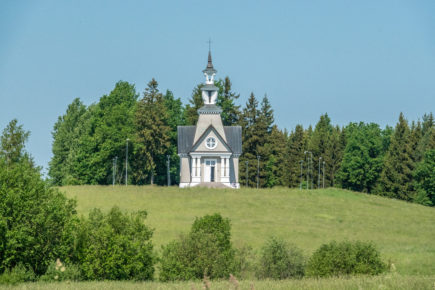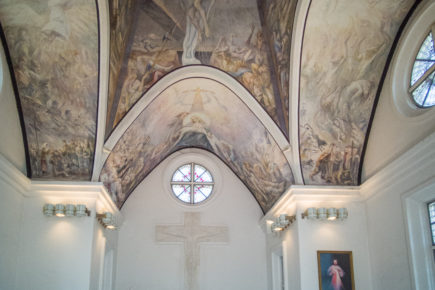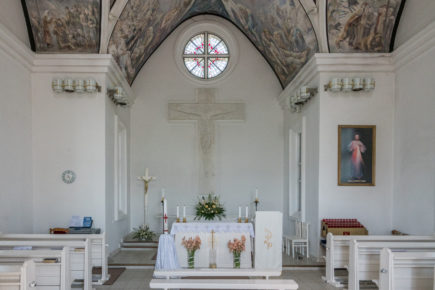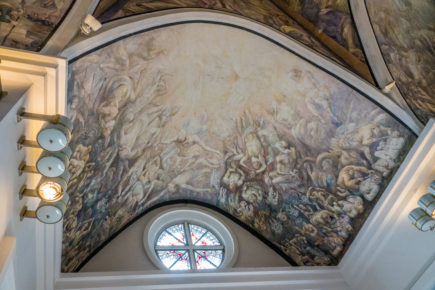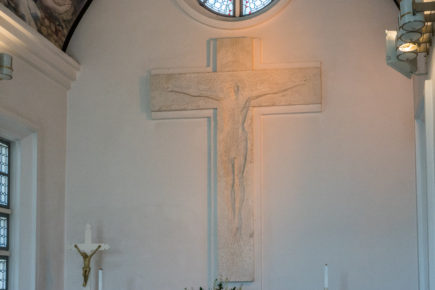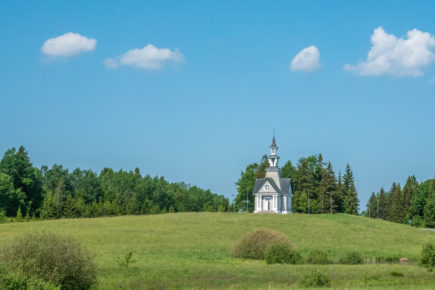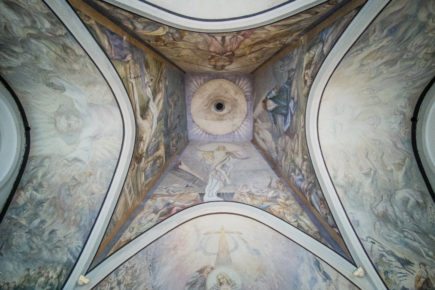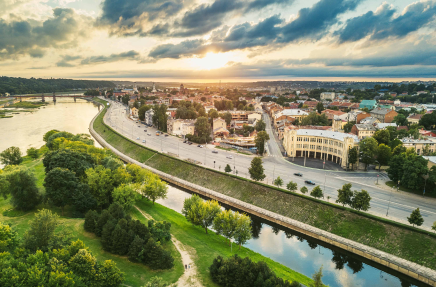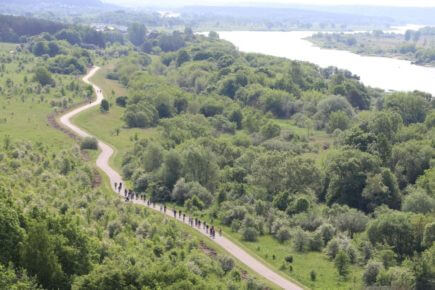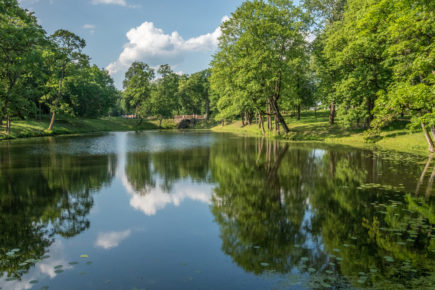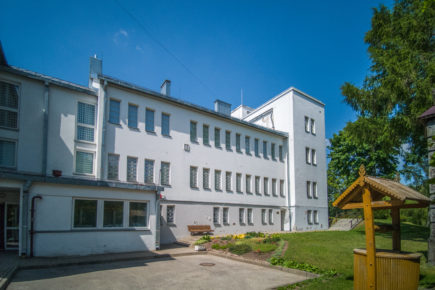One of the most tragic events in the history of Lithuania was a massacre in the Rainiai Forest (22-28 June 1941). On the night of 24 June, retreating Soviet soldiers, assisted by local collaborators, sadistically killed 75 political prisoners in the Telšiai Prison. These were teachers, students, farmers, craftsmen, civil servants and workers from surrounding areas whose biggest “fault” was their love for Lithuania and an unwillingness to obey their occupiers.
This was probably the only massacre in Lithuania where no living witnesses remained. Only the perpetrators of the execution testified. A prison was established in Telšiai for anti-Soviet Samogitians in 1940, at the onset of Soviet occupation. They were arrested for belonging to “anti-state parties” (nationalists, people, Christian Democrats, Social Democrats, Young Lithuanians, shooters, etc.), for possessing weapons, taking part in anti-Soviet agitation, raising the Lithuanian national flag, attempting to cross the USSR-German border, etc. Most of the detainees were teachers, their pupils and students, other local intellectuals and wealthy farmers. They were interrogated and tortured. The prison operated until 24 June 1941.
NKVD officers took 75 political prisoners from their cells. Five trucks with their engines running were parked outside to drown out their cries for help. Officers then tied their hands, closed their mouths, threw them into trucks and took them to Rainiai Forest where four pits were prepared. That’s where the execution began. In the morning, bodies were buried in those pits. After excavating the four pits, locals found the remains of 75 political prisoners. Only 10 prisoners were shot. As a result of the injuries, the remains of 46 people were not identifiable. The remains of 65 tortured prisoners were buried in a common grave in the old cemetery of Telšiai, and the other 10 prisoners were buried in the cemeteries of their relatives.
At the beginning of the second Soviet occupation, a chapel was demolished and the nearby Rainiai Forest was cut down. Soviets wanted people to forget the terrible tragedy and its culprits. However, the suffering of the Rainiai victims did not fade in people’s minds. Often in June, crosses and Lithuanian flags were put up at the site and subsequently taken down by the Soviets every time.
After the restoration of Lithuanian independence in 1989, the Samogitian Cultural Society began to take care of the commemoration of the Rainiai victims. On 24 June of that year, the first commemoration of the Rainiai tragedy took place, gathering people from all over Lithuania. After mass at the Telšiai Cathedral and a rally at the former prison, a memorial plaque was unveiled and people went to the place of massacre, the Rainiai Forest, where the cornerstone of the future chapel was consecrated.
In 1991, the Chapel of Suffering was built and the Oak of Memory was planted in the Village of Rainiai. There is an exposition in the basement of the Rainiai Chapel that recounts this painful event. According to J. Virakas, architect A. Žebrauskas made the sketches for the chapel. They build a chapel in Rainiai because there was no more space in Telšiai Cemetery.
A memorial was erected and the Chapel of Suffering was consecrated in 1991 to commemorate the 50th anniversary of the massacre. It also immortalised the memory of all the victims of Soviet terror. White dominates the chapel and the ceilings and walls are covered with frescoes by Antanas Kmieliauskas depicting the Rainiai martyrs, Siberian exiles, and partisans, which all intertwines with the suffering of Christ and his Mother. Reflecting on his process Antanas Kmieliauskas said, “When painting a fresco in the Rainiai Chapel, I thought for a very long time how to convey not only the suffering of Rainiai, but also the suffering of our whole nation. How can we solve the riddle of this evil? Could God otherwise not have saved mankind just by allowing his only begotten son to be crucified? Couldn’t Lithuania avoid a terrible war and post-war experience? Therefore, I decided to make a comparison: in the centre I depicted the suffering of Christ, and on the sides the experiences of the Lithuanian people and dozens of Samogitian martyrs, whose fate led to such a terrible death a couple of hundred metres from this chapel. And to ensure that all this wouldn’t be too shocking, I used light tones so it would dissolve in the clouds.”
A white marble cross carved by sculptor R. Midvikis stands at the centre of the chapel. Three more wooden crosses painted in the colours of the national flag stand alongside the marble cross. These were carved by locals and put there shortly after the massacre. After the war, collaborators threw them in the Viešvėnai Pond. The crosses were recently found and restored after the pond was drained.
The chapel’s stained glass windows are dominated by a white background, which symbolises Samogitian mourning. The hints depict suffering: red drops of blood and tools of torture, like nails and pliers. Barbed wire symbolises the concentration camp and the motif of the Shroud of Turin is also visible. With bright and subtle stained glass, artist A. Dovydėnas showed the depth of the nation’s tragedy and suffering through his own memories of exile in Siberia.
Four copper figures depicting the Rainiai martyrs with outstretched arms created by the sculptor R. Midvikis are installed in the chapel tower.
In 1994, architect Algirdas Žebrauskas, painter Antanas Kmieliauskas, stained glass artist Algis Dovydėnas, and sculptor Remigijus Midvikis were awarded the National Art and Culture Prize of the Republic of Lithuania for the creation of the Rainiai Memorial.
The chapel is open for mass on Sunday mornings, and people from the villages of Rainiai and Viešvėnai gather together with believers from Telšiai. Commemorations take place during the anniversary of the Rainiai Massacre, which coincides with the celebration of Jonininės. If you want to visit the chapel at another time or for an excursion, you should contact the Samogitian Alka Museum.
